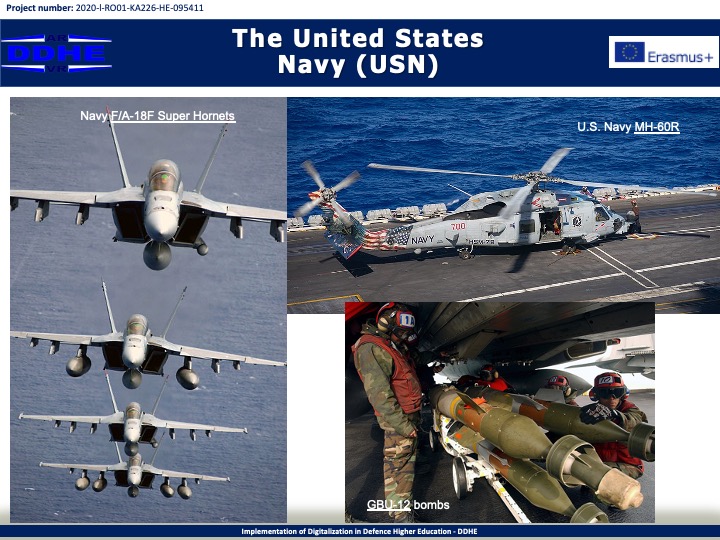Carrier-based aircraft are able to strike air, sea, and land targets far from a carrier strike group while protecting friendly forces from enemy aircraft, ships, and submarines. In peacetime, aircraft's ability to project the threat of sustained attack from a mobile platform on the seas gives United States leaders significant diplomatic and crisis-management options. Aircraft additionally provide logistics support to maintain the navy's readiness and, through helicopters, supply platforms with which to conduct search and rescue, special operations, anti-submarine warfare (ASW), and anti-surface warfare (ASuW), including the U.S. Navy's premier Maritime Strike and only organic ASW aircraft, the venerable Sikorsky MH-60R operated by Helicopter Maritime Strike Wing.
The U.S. Navy began to research the use of aircraft at sea in the 1910s, with Lieutenant Theodore G. "Spuds" Ellyson becoming the first naval aviator on 28 January 1911, and commissioned its first aircraft carrier, USS Langley (CV-1), in 1922. United States naval aviation fully came of age in World War II, when it became clear following the Attack on Pearl Harbor, the Battle of the Coral Sea, and the Battle of Midway that aircraft carriers and the planes that they carried had replaced the battleship as the greatest weapon on the seas. Leading navy aircraft in World War II included the Grumman F4F Wildcat, the Grumman F6F Hellcat, the Chance Vought F4U Corsair, the Douglas SBD Dauntless, and the Grumman TBF Avenger. Navy aircraft also played a significant role in conflicts during the following Cold War years, with the F-4 Phantom II and the F-14 Tomcat becoming military icons of the era. The navy's current primary fighter-attack airplane is the multi-mission F/A-18E/F Super Hornet. The F-35C entered service in 2019. The Navy is also looking to eventually replace its F/A-18E/F Super Hornets with the F/A-XX program.
The Aircraft Investment Plan sees naval aviation growing from 30 percent of current aviation forces to half of all procurement funding over the next three decades.
